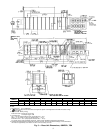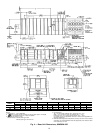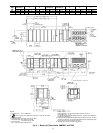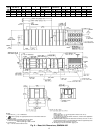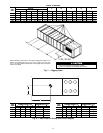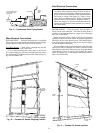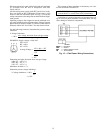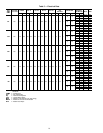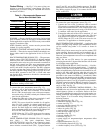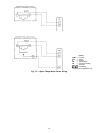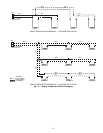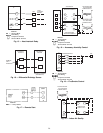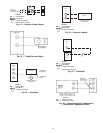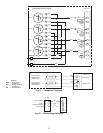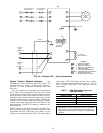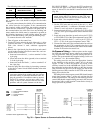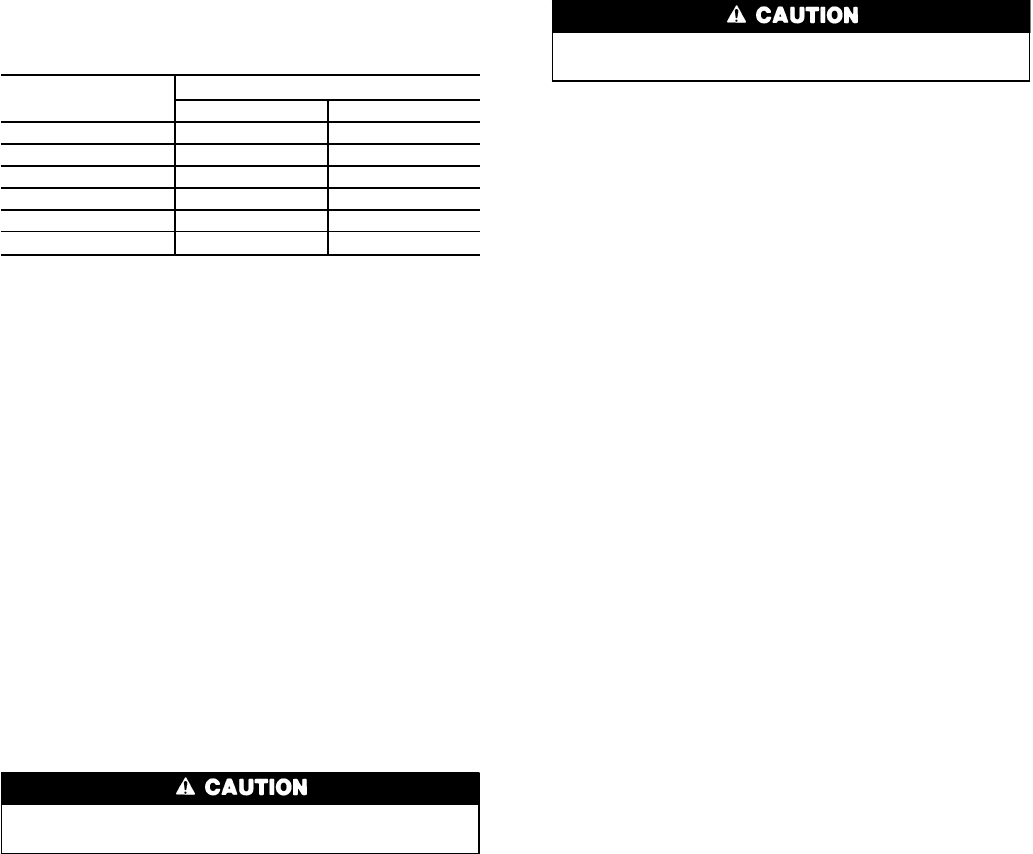
Control Wiring — See Fig. 13 for sensor wiring con-
nections to main and auxiliary control boxes. The recom-
mended types of control wiring for 48/50MP unit devices
are shown in Table 6.
Table 6 — Recommended Sensor and
Device Non-Shielded Cable
MANUFACTURER
PART NO.
Regular Wiring Plenum Wiring
Alpha 1895 —
American A21451 A48301
Belden 8205 884421
Columbia D6451 —
Manhattan M13402 M64430
Quabik 6130 —
SENSORS — Sensors should be wired using single twisted
pairs of 20AWG (American Wire Gage) conductor cable rated
for the application, except for the T56 accessory sensor which
requires 3-conductor cable.
NOTE: Humidity and CO
2
sensors must be powered from
isolated 24-v power supplies.
HUMIDITY CONTROLAND HOT WATER AND STEAM
VALVES — These devices require 20AWG twisted pair con-
ductor cables rated for the application for the 4 to 20 mA
signal.
SPACE TEMPERATURE SENSOR (T55) — The space tem-
perature sensor (P/N CEC0121448-01) is shipped standard
with every unit, and is located in the main control box. Space
temperature sensor wires are to be connected to terminals in
the unit main control box. The space temperature sensor
includes a terminal block (TB1), a jumper between pins E2
and E3, and an RJ11 female connector. The RJ11 connector
is used to tap into the Carrier Comfort Network (CCN) at
the sensor. See RJ11 Plug Wiring section on page 24 to con-
nect the RJ11 connector to the CCN. A 3-lead cable must
run from the RJ11 connector to the unit for communication
through the sensor.
Jumper MUST be in place between pins E2 and E3 or
inaccurate readings could result.
To connect the space temperature sensor (Fig. 13):
1. Connect 1 wire of the twisted pair to terminal T1 (T55)
and connect the other wire to terminal T2 on terminal
block 1 (TB1) located on the cover of the space tempera-
ture sensor using a 20 AWG twisted pair conductor cable
rated for the application.
2. Connect the other ends of the wires to terminals 1 and 2
on TB3 located in the unit main control box.
NOTE: This sensor should be installed for all applica-
tions. For VAV (variable air volume) applications, it is
used to control heating and cooling during unoccupied
periods. For DAV (digital air volume) applications, it is
used to maintain control of the space during linkage fail-
ures with the TSM (terminal system manager).
NOTE: Either the T55 or T56 sensor must be connect-
ed for CV (constant volume) applications to function
properly.
SPACE TEMPERATURE SENSOR (T56) (CV Applica-
tions Only) — The space temperature sensor
(P/N CEC0121503-01) wires are to be connected to termi-
nals in the unit main control box. The space temperature
sensor includes a terminal block (TB1), a jumper between
pins E2 and E3, and an RJ11 female connector. The RJ11
connector is used to tap into the CCN at the sensor. See RJ11
Plug Wiring section on page 24 to connect the RJ11 con-
nector to the CCN.
Jumper MUST be in place between pins E2 and E3 or
inaccurate readings could result.
To connect the space temperature sensor (Fig. 13):
1. Connect one wire of the 3-conductor cable to terminal
TH, one wire to terminal COM, and the other wire to ter-
minal SW on terminal block 1 (TB1) located on the cover
of the space temperature sensor using a 20 AWG twisted
3-conductor cable rated for the application.
2. Connect the other ends of the wires to terminals 1, 2, and
3 on TB3 located in the unit main control box. The wire
from terminal SW MUST be connected to terminal 3.
NOTE: Either the T55 or the T56 sensor must be con-
nected for CV applications to function properly.
SPACE TEMPERATUREAVERAGING —Applications that
require averaging using multiple space temperature sensors
can be satisfied using either 4 or 9 sensors as shown in
Fig. 14.
NOTE: Only Carrier sensors may be used for standard T55
space averaging. Sensors must be used in multiples of 1, 4,
and 9 only, with total sensors wiring not to exceed 1000 ft.
However, space temperature reset can be accomplished with
only one sensor.
NOTE: Do not use T56 sensors for space temperature
averaging because the 5 degree offset function will not work
in a multiple sensor application.
HEAT INTERLOCK RELAY (VAV Units Only — Not Nec-
essary For Digital Air Volume Applications) — Variable air
volume (VAV) units using optimal start (morning warm-up)
and/or occupied heating require that room terminals be con-
trolled to the fully open position when the unit goes into
heating mode. The HIR (Heat Interlock Relay) function is
provided for this control on DSIO no. 2, channel 60. When
the unit goes into heating mode, the HIR is energized to pro-
vide switch closure or opening (depending on how the field-
supplied power source is set up) to open the room terminals.
The field connections for the HIR are: Normally Closed, ter-
minals 8 and 10 on TB3; and Normally Open, terminals 8
and 9 on TB3. See Fig. 15.
OPTION AND ACCESSORY CONTROL WIRING — The
48/50MP units may be used in applications with additional
control features, options, or accessories. Refer to the Con-
trols and Troubleshooting manual for more information con-
cerning installation and configuration of options and acces-
sories. Figures 15 to 29 contain wiring information on the
following features:
• heat interlock relay (Fig. 15)
• differential enthalpy sensor (Fig. 16)
• remote start (Fig. 17)
• accessory humidity control (Fig. 18)
• fire/smoke control (Fig. 19)
• indoor air quality (Fig. 20)
• outdoor airflow control (Fig. 21)
• timed discrete output (Fig. 22)
• humidifier (Fig. 23)
• hydronic heating (Fig. 24)
• freezestat (Fig. 25)
• remote supply air temperature/space temperature offset
(Fig. 26)
• transducer/thermistor (Fig. 27)
• CCN Building Supervisor (Fig. 28)
• variable frequency drive (VFD) (Fig. 29)
17



